Understanding the Intersection of ABA Therapy and Anxiety in Autism
Autism spectrum disorder (ASD) often coexists with significant anxiety challenges, which can impede a child's ability to develop social skills, manage daily routines, and express their needs. Applied Behavior Analysis (ABA) therapy emerges as a structured, evidence-based approach designed not only to promote adaptive skills but also to reduce anxiety symptoms. This article explores how ABA techniques target anxiety triggers, foster emotional regulation, and support children with autism in leading more confident, less stressful lives.
The Foundation of ABA Therapy in Addressing Anxiety
How does ABA therapy help in reducing anxiety in children with autism?
ABA, or Applied Behavior Analysis, is widely used to help children with autism manage and reduce anxiety. One of the main approaches involves functional assessments, which identify the specific triggers that cause anxiety in each individual. These triggers can include changes in routines, sensory overload, social situations, or transitions. By understanding what sparks anxiety, therapists can develop personalized strategies that directly target these sources.
Another important aspect of ABA is its reliance on data-driven interventions. Behavior analysts carefully track progress and behaviors through systematic data collection. This evidence-based approach allows for tailored modifications to behavior plans, ensuring that each child's unique needs are met, and effective coping mechanisms are reinforced.
To teach children these skills, ABA employs behavioral modeling and reinforcement strategies. For example, children might be exposed gradually to anxiety-provoking stimuli through techniques like systematic desensitization, combined with positive reinforcement for calm or desired behaviors. Using visual supports, role-playing, and social stories prepare children for challenging situations, boosting their confidence and reducing avoidance.
Further, ABA incorporates relaxation and coping strategies, such as deep breathing exercises, visual calming tools, and the use of sensory diets to help regulate responses to sensory stimuli. These interventions teach children how to manage physical symptoms of anxiety, like increased heart rate or hand-flapping, fostering a sense of control and emotional resilience.
Ultimately, ABA’s structured, individualized approach aims to decrease the frequency and intensity of anxiety symptoms, promote emotional regulation, and enhance adaptive skills, leading to improved daily functioning and quality of life for children on the autism spectrum.
Understanding Anxiety in Children with Autism
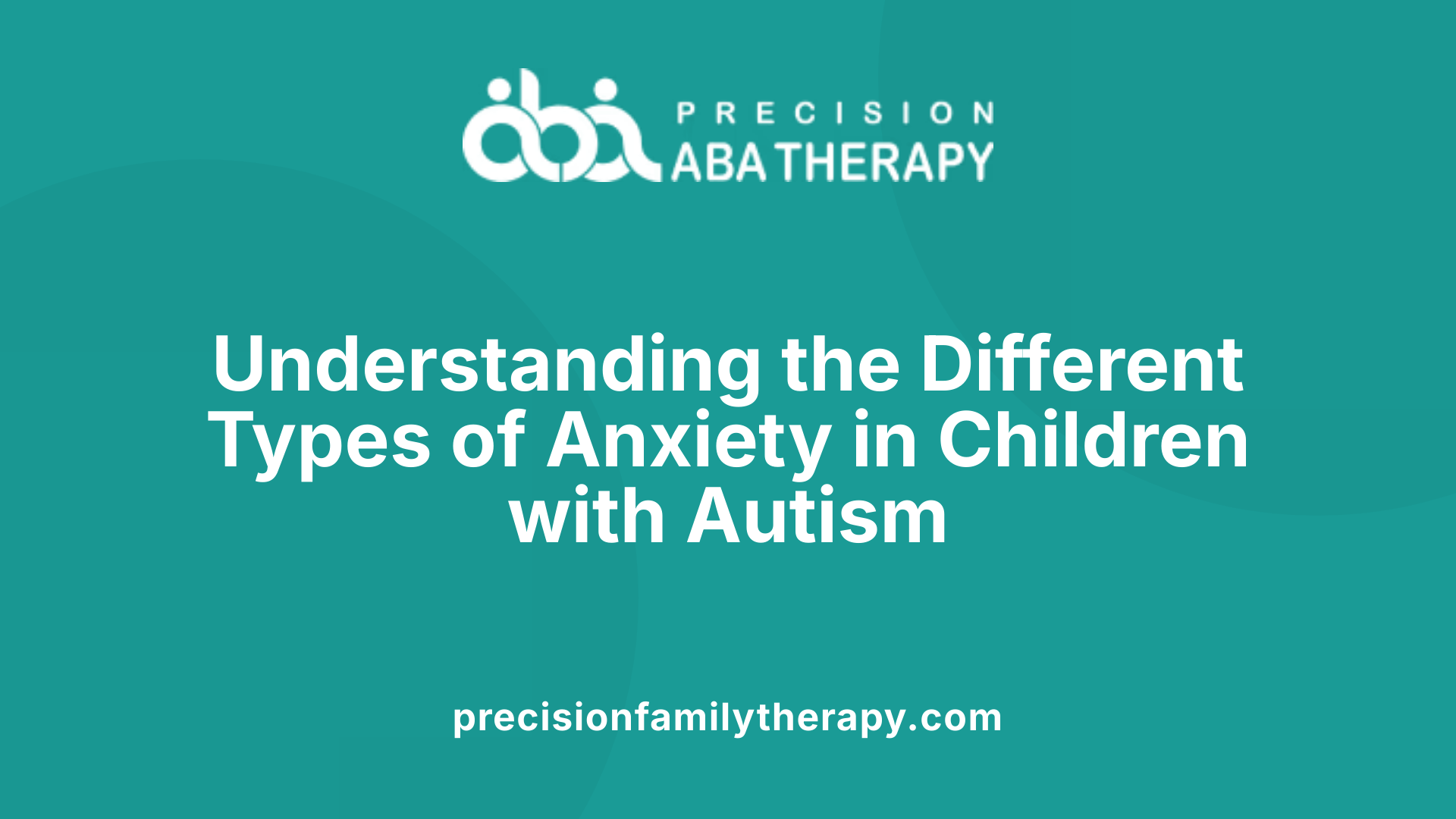
What are the different types of anxiety common in children with autism?
Many children with autism experience various forms of anxiety similar to their typically developing peers. These include separation anxiety, social anxiety, OCD-like perseverations, GAD (generalized anxiety disorder), and panic disorder. Up to 40% of children with autism face significant anxiety-related challenges. They may also exhibit specific phobias, sensory-related anxieties, and fears of objects or situations that trigger their stress responses.
How does anxiety manifest through behaviors and physical symptoms?
Autistic children often show anxiety through challenging behaviors like repetitive actions, avoidance of social interactions, and tantrums. Physically, they may exhibit increased heart rate, sweating, stomach discomfort, and rapid breathing. These signs result from the body’s stress response, especially during sensory overload or stressful social situations.
In what ways do sensory sensitivities and overloads act as anxiety triggers?
Sensory sensitivities are common, with around 75% of children with autism affected by sensory processing disorder. Overstimulation from loud noises, bright lights, or chaotic environments can lead to sensory overload, activating the 'fight or flight' response. This triggers physiological reactions like cortisol release, causing stress and sometimes meltdowns—reactions to feeling overwhelmed that are uncontrollable.
Benefits of ABA therapy for anxiety reduction in autistic children
ABA therapy provides a structured, evidence-based means to help children understand and manage their anxiety. It systematically identifies each child's specific triggers through functional assessments. From there, tailored interventions include teaching calming behaviors, relaxation strategies like deep breathing, and gradual desensitization through exposure to anxiety-provoking stimuli in a safe, controlled setting.
ABA also emphasizes positive reinforcement, helping children associate stressful situations with positive outcomes. This approach builds their confidence and resilience. Incorporating visual supports, social stories, and sensory-friendly environments further aids in reducing anxiety. Additionally, involving parents and caregivers in ABA training ensures consistent support outside therapy sessions.
Through these strategies, ABA not only alleviates immediate anxiety symptoms but also fosters long-term emotional regulation, social skills, independence, and improved daily functioning. Overall, ABA therapy's personalized and comprehensive approach significantly enhances the well-being of children with autism by addressing their unique anxiety challenges.
Techniques and Strategies in ABA for Managing Anxiety
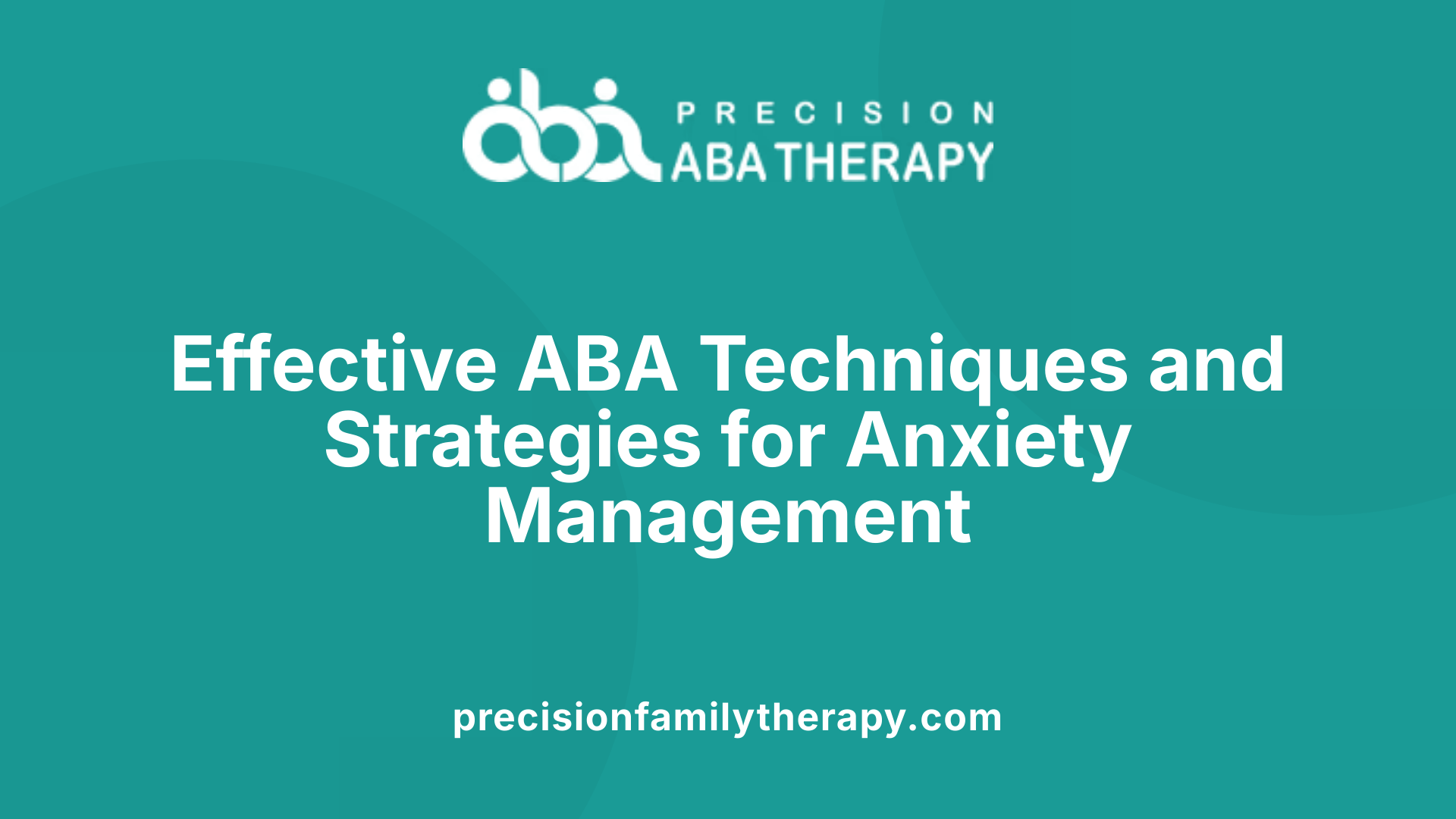
What techniques and strategies are used in ABA therapy to manage anxiety?
ABA therapy utilizes a diverse range of approaches to help children with autism cope with anxiety more effectively. One core method is systematic desensitization combined with graduated exposure. This involves gradually introducing children to anxiety-provoking stimuli in a controlled way, helping them become less sensitive over time. For instance, if a child fears loud noises, they might start with softer sounds and slowly progress to louder ones, all while practicing calm, relaxed responses.
Relaxation training is also a vital component. Techniques like deep breathing, visualization, and progressive muscle relaxation are taught to help manage physical symptoms of anxiety such as rapid heartbeat or tense muscles. These strategies equip children with tools to regulate their physiological responses during stressful moments.
Using visual supports, social stories, and role-playing constitutes another crucial strategy. Visual supports help prepare children for upcoming changes or social interactions by providing clear, pictorial representations, reducing uncertainty. Social stories outline expected behaviors and outcomes, easing transitions and social engagement. Role-playing allows children to practice handling challenging situations in a safe environment, boosting confidence and reducing anxiety.
Positive reinforcement is central to encouraging calming behaviors and skill-building. When children demonstrate coping strategies or appropriate social responses, they receive praise or rewards, reinforcing these positive behaviors. Creating predictable routines and sensory-friendly environments further minimizes sources of stress and sensory overload.
Integrating mindfulness exercises and social skills training tailors interventions to each child's needs, promoting emotional regulation and social confidence. Family involvement is emphasized, as caregivers can reinforce strategies at home, ensuring consistency and greater success.
Research indicates that these combined approaches within ABA significantly reduce anxiety symptoms and foster adaptive behaviors, improving overall well-being for children with autism.
Addressing Separation Anxiety and Building Independence
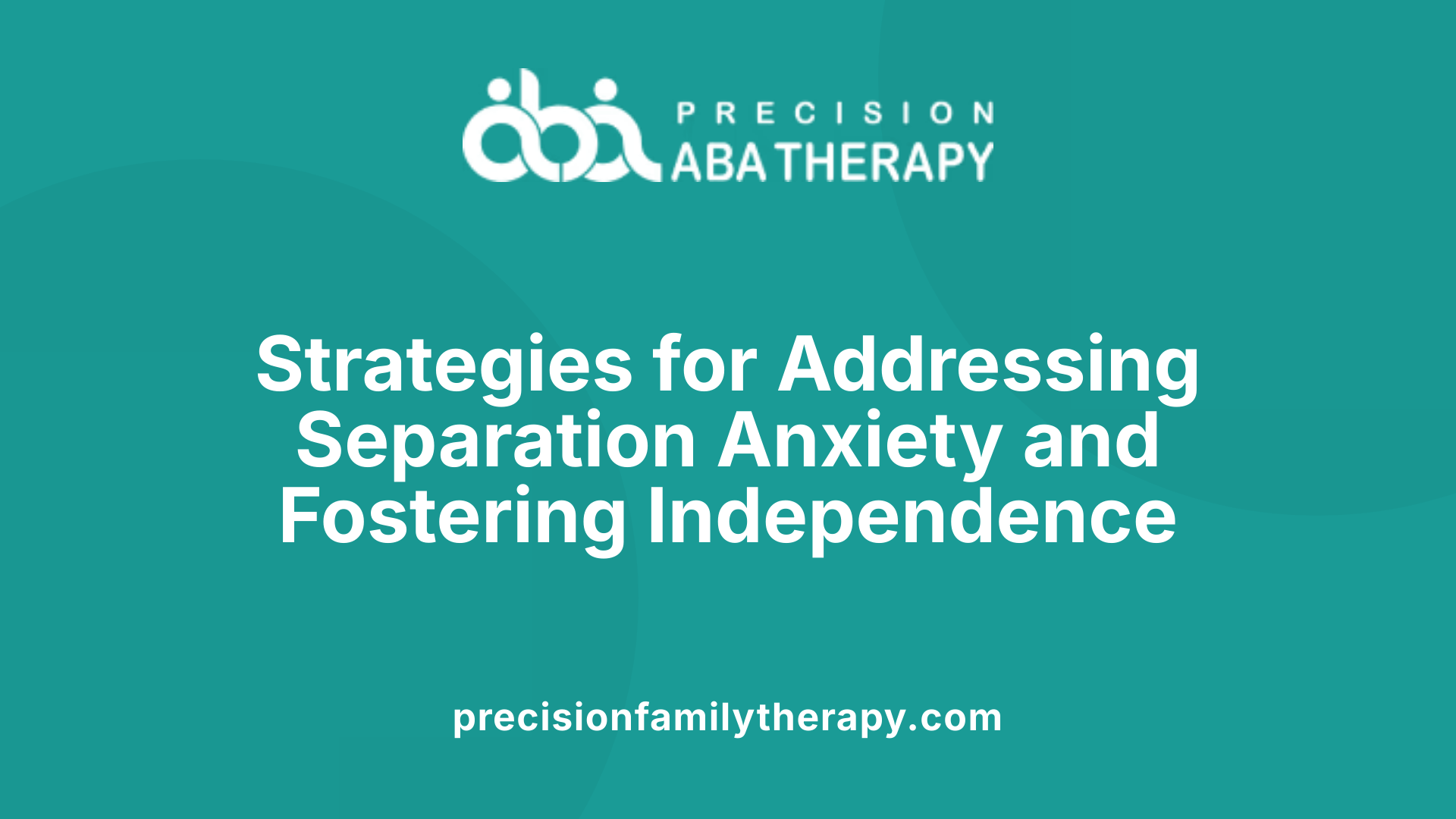
How can ABA therapy address separation anxiety in children with autism?
ABA therapy plays a crucial role in helping children with autism manage separation anxiety. Its approach centers on teaching children coping mechanisms and social skills tailored to their individual needs. Through structured interventions, children learn to tolerate separations gradually, reducing distress.
ABA uses techniques like breaking down complex routines, employing visual supports such as social stories, and reinforcing positive behaviors during separations. These methods promote predictability and create a sense of safety for the child.
A vital aspect of ABA is gradual desensitization, where children are slowly exposed to separation scenarios while practicing calming strategies. Building trust is also key, involving caregivers in implementing consistent routines that reinforce the child's sense of security.
Family collaboration ensures that strategies are reinforced across different settings, helping children develop independence and adaptive responses. As a result, children learn to manage their anxiety, foster trust, and become more comfortable during separations, leading to decreased anxiety and greater independence over time.
The Connection Between ABA and Anxiety Management
How are ABA therapy interventions connected to anxiety management in children with autism?
Applied Behavior Analysis (ABA) therapy plays a significant role in helping children with autism manage anxiety effectively. It employs carefully developed, evidence-based techniques like systematic desensitization, exposure therapy, and positive reinforcement to tackle anxiety triggers.
ABA begins with identifying what causes anxiety in each individual child. Using functional assessments, therapists pinpoint specific triggers such as sensory overload, changes in routine, or social situations. Once these triggers are identified, ABA uses targeted strategies to help children respond differently.
A common approach involves gradual exposure to anxiety-provoking stimuli in a controlled, supportive environment. For example, through role-playing and visual supports, children are slowly introduced to feared situations, building their confidence step by step. This process allows children to learn that the stimuli are not harmful while practicing calming techniques like deep breathing.
Reinforcement plays a vital part in ABA. Positive reinforcement encourages children to engage in calming behaviors and develop new, healthier responses to anxiety. Techniques such as social skills training enhance confidence in social interactions, which can often be sources of social anxiety.
Furthermore, ABA integrates emotional regulation skills into its programs. It teaches children to recognize their feelings of anxiety, understand physical signs like a racing heart or sweaty palms, and use strategies such as visualization, relaxation exercises, or self-soothing objects to manage their symptoms.
Behavioral interventions also focus on reducing avoidance behaviors that often stem from anxiety. By gradually facing feared situations through desensitization, children learn to tolerate and cope with these circumstances, reducing overall anxiety levels.
Overall, ABA therapy customizes interventions to each child's unique needs, combining behavioral techniques and emotional regulation strategies. This tailored approach not only diminishes anxiety symptoms but also enhances social skills, promotes independence, and improves the overall quality of life for children with autism.
Supporting Mental Health and Enhancing Behavior with ABA
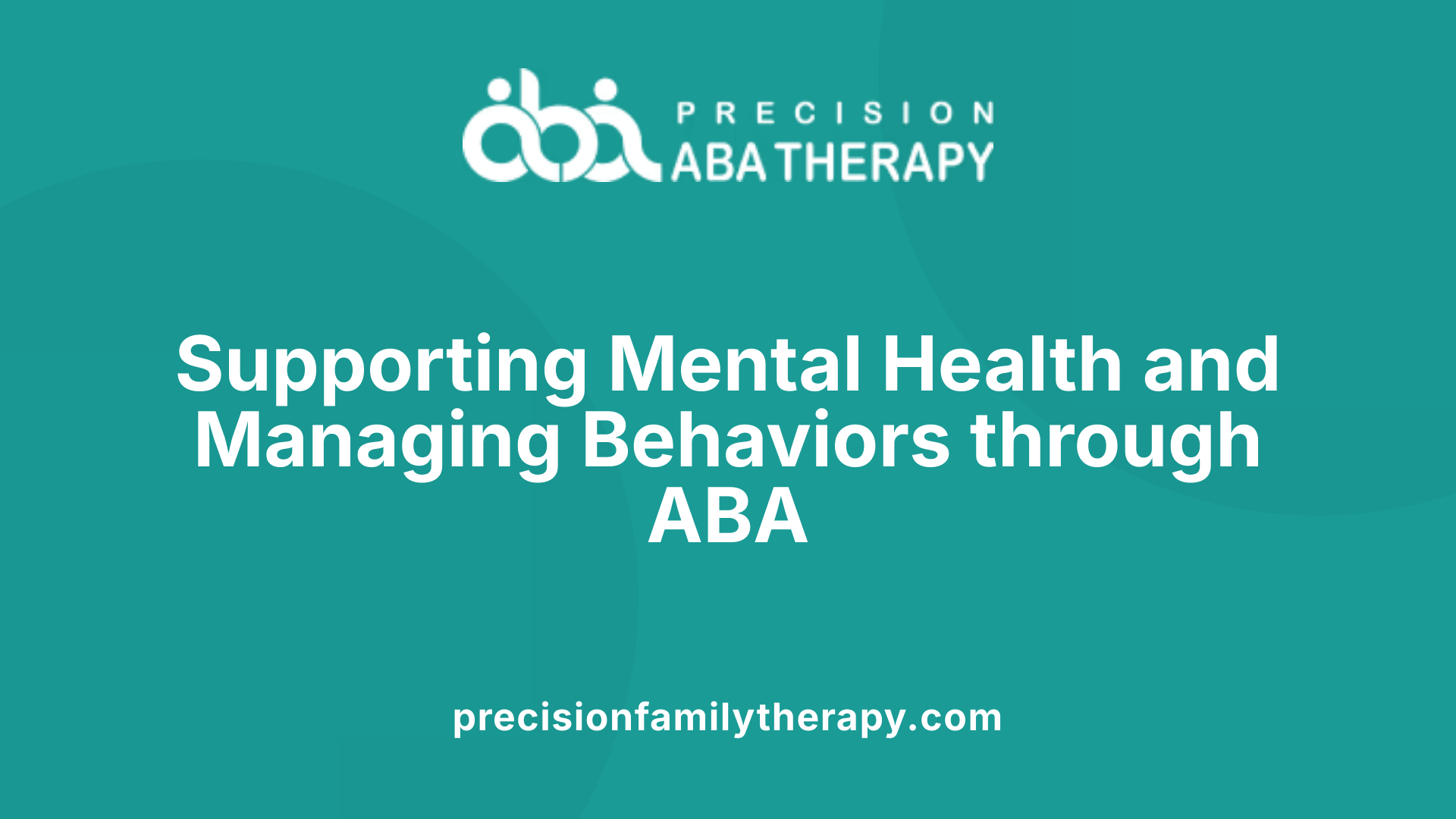
How does ABA therapy support mental health and behavior management in children with autism?
Applied Behavior Analysis (ABA) therapy plays a vital role in fostering mental health and managing behaviors in children with autism. It focuses on teaching children essential skills like communication, emotional regulation, and independence, which are directly linked to their overall well-being.
One of the main approaches of ABA involves identifying specific triggers for challenging behaviors—such as sensory overload or social stress—and teaching children more adaptive responses. This often includes positive reinforcement, which encourages calming behaviors and helps children associate stressful situations with positive outcomes.
Parental and caregiver involvement is an integral part of ABA. Training and supporting families help ensure that the strategies learned during therapy sessions are consistently applied across various settings. This consistency fosters better behavioral and emotional outcomes, promoting a sense of security and reducing anxiety.
Early and tailored intervention with ABA has proven to significantly enhance cognitive, language, and social skills. As children gain better communication and self-care abilities, their independence increases, boosting their self-esteem and confidence.
Overall, ABA provides scientifically supported methods to help children with autism manage behaviors, cope with stressors, and improve their quality of life. By addressing behaviors through a personalized approach, ABA helps lay a strong foundation for mental health and emotional stability in children with autism.
Empowering Parents and Caregivers: The Key to Success in ABA and Anxiety Reduction
How do parental training programs support children with autism experiencing anxiety?
Parental training programs are an essential component of effective ABA therapy. These programs empower parents and caregivers with the knowledge and skills needed to support their child's emotional well-being and manage anxiety at home and in everyday situations. Through education on understanding anxiety symptoms, recognizing triggers, and implementing calming techniques, parents become active contributors to the therapy process.
Training often includes teaching practical strategies such as creating visual supports, establishing predictable routines, and using reinforcement to encourage calming behaviors. Parents learn to apply relaxation techniques like deep breathing and to create sensory-friendly environments that help reduce over-stimulation. By practicing these skills, caregivers can help children develop healthier responses to stress and anxiety, leading to improved daily functioning.
What reinforcement strategies can be used at home and school?
Reinforcement strategies are crucial for encouraging positive coping behaviors and reducing anxiety-related challenging behaviors. Consistent use of reinforcement—praising or rewarding children for demonstrating calmness, compliance, or social interaction—helps children associate these behaviors with positive outcomes.
In home and school settings, setting up a system of tangible rewards (like earning tokens or preferred items) or social praise can motivate children to practice anxiety-reducing techniques. Visual schedules, social stories, and fidget tools complement these strategies by providing predictable structures and distraction during stressful moments.
How does building confidence and reducing caregiver stress contribute to successful anxiety management?
Building caregiver confidence is vital because a calm, supported caregiver is better equipped to implement intervention strategies effectively. When parents and teachers understand their child's needs and effective techniques, they can respond more consistently and confidently to anxiety episodes.
Reducing caregiver stress is equally important. Stress can hinder a caregiver's ability to apply strategies patiently and consistently. Support groups, coaching, and respite care options help caregivers maintain their mental health, ensuring they are present and attentive.
Over time, increased confidence and decreased stress lead to a more positive environment where children feel secure, understood, and supported. This supportive environment fosters the child's trust and engagement in therapy processes, ultimately leading to better outcomes in managing anxiety.
| Aspect | Description | Benefits |
|---|---|---|
| Parental Training | Education and hands-on practice | Empowers caregivers, improves consistency, boosts confidence |
| Reinforcing Strategies | Rewards rooted in positive behaviors | Encourages coping skills, fosters independence |
| Building Confidence & Reducing Stress | Support, coaching, self-care | Enhances caregiver effectiveness, creates stability for child |
These elements work cohesively to enhance the child's ability to manage anxiety, improve communication, and develop independence, significantly improving their quality of life.
Conclusion: Building a Supportive Environment for Emotional Well-being
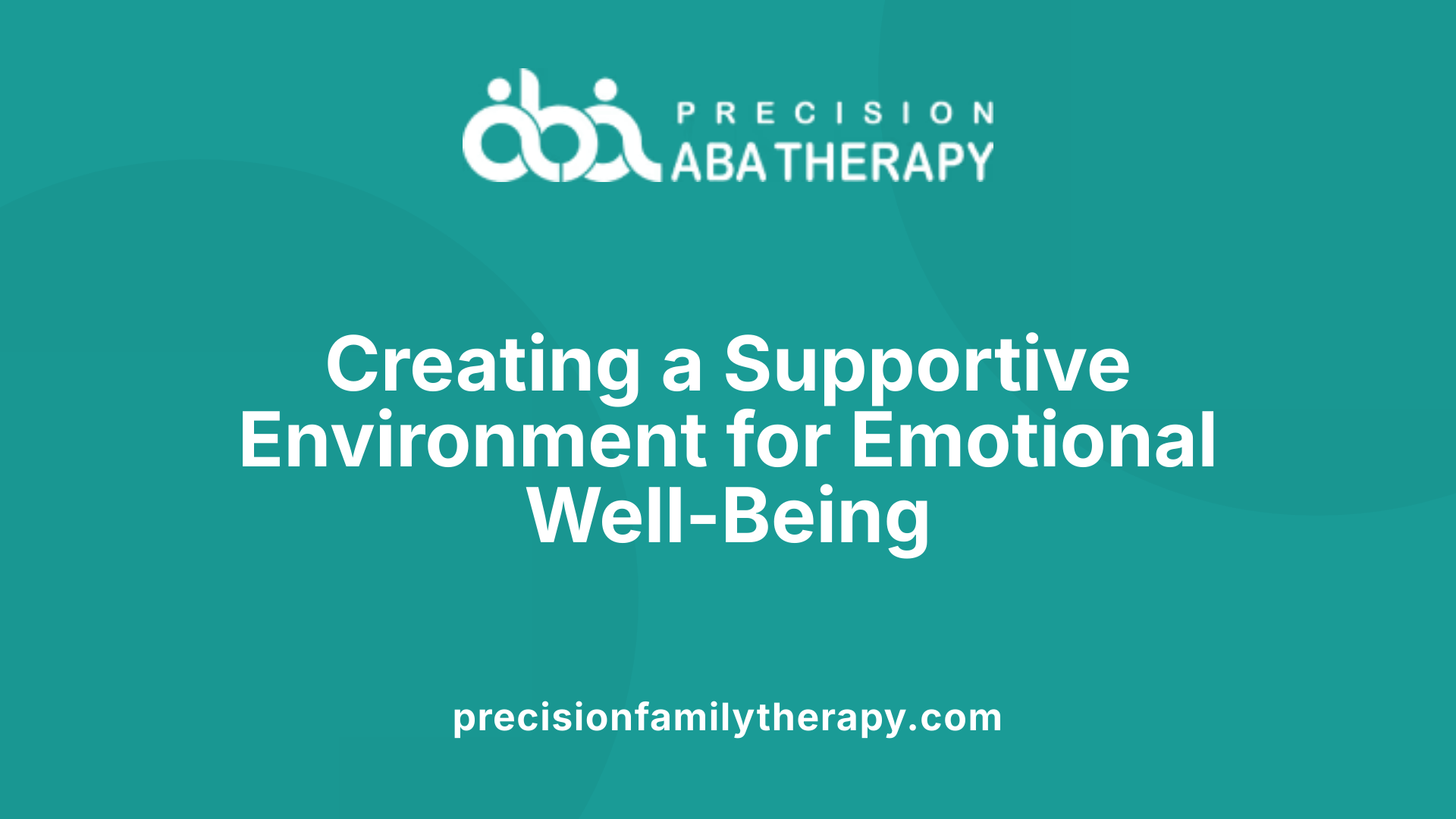 Creating a supportive environment for children with autism experiencing anxiety involves a combination of structured therapeutic strategies and active family involvement. ABA therapy plays a crucial role by addressing specific triggers, teaching coping skills, and reducing challenging behaviors related to anxiety.
Creating a supportive environment for children with autism experiencing anxiety involves a combination of structured therapeutic strategies and active family involvement. ABA therapy plays a crucial role by addressing specific triggers, teaching coping skills, and reducing challenging behaviors related to anxiety.
Integrating ABA techniques with family efforts is essential. Parents and caregivers are trained to reinforce calming behaviors, utilize visual supports, and implement relaxation activities at home. This consistency helps children feel more secure and confident, as their routines become predictable and their communication improves.
Fostering confidence and independence is a primary goal of ABA. When children learn to manage their anxiety through gradual desensitization, social skills training, and self-regulation techniques, they become more capable of navigating daily life with reduced stress.
Research indicates that the long-term benefits of ABA extend beyond immediate behavior changes. Persistent application of ABA strategies can lead to lasting improvements in emotional regulation, social interaction, and adaptive functioning.
Overall, a tailored, multi-faceted approach that combines therapy, family support, and environmental adjustments provides children with autism the best chance to thrive emotionally and socially. This holistic focus not only alleviates anxiety but also promotes resilience and a higher quality of life.
Fostering a More Resilient Future
ABA therapy, with its personalized, evidence-based, and multifaceted approach, plays a crucial role in helping children with autism manage and reduce anxiety. By teaching coping skills, emotional regulation, and social behaviors, ABA interventions support mental health, increase independence, and improve daily functioning. Collaboration with families, caregivers, and professionals ensures that strategies are consistently reinforced across environments, leading to lasting positive outcomes. As research continues to affirm its effectiveness, ABA remains a cornerstone in creating supportive, adaptive, and empowering settings for children with autism, paving the way for a more resilient and confident future.
References
- The Role of ABA Therapy in Managing Anxiety
- 10 Tips To Help Calm Anxiety in Kids with Autism - Harkla
- Anxiety and Autism: All You Should Know
- Cognitive behavioral therapy for anxiety in children with autism ...
- Anxiety in autistic children & teenagers | Raising Children Network
- Strategies for Managing Anxiety in Children With Autism - MySpot
- 7 Surprising Benefits of ABA Therapy for Kids You Need to Know
- Understanding and Supporting Children with Autism and Separation ...




